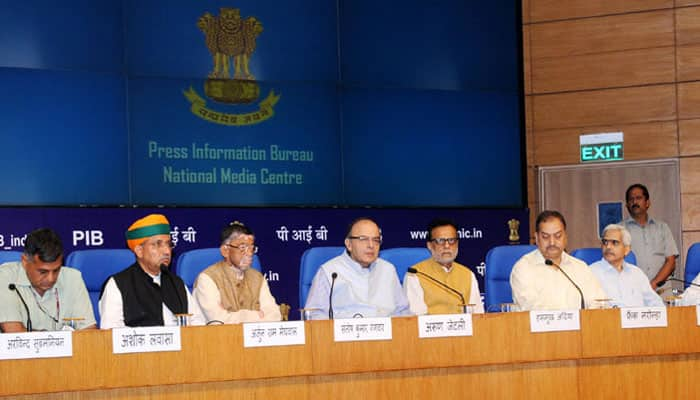Zee Media Bureau
New Delhi: As government looks to implement the Goods and Services Tax (GST) from April next year, Finance Minister Arun Jaitley on Thursday said the tax rate will be "optimum" even as there were indications that it may be higher than 18 percent.
A day after Rajya Sabha approved a constitutional amendment to pave the way for rollout of GST, he said the tax rate will be decided by the GST Council, which will have Union Finance Minister and representatives of all 29 states.
Know here how the transactions of goods and services will be taxed under Goods and Services Tax (GST) regime.
How would GST be administered in India?
Keeping in mind the federal structure of India, there will be two components of GST – Central GST (CGST) and State GST (SGST). Both Centre and States will simultaneously levy GST across the value chain.
Tax will be levied on every supply of goods and services. Centre would levy and collect Central Goods and Services Tax (CGST), and States would levy and collect the State Goods and Services Tax (SGST) on all transactions within a State.
The input tax credit of CGST would be available for discharging the CGST liability on the output at each stage. Similarly, the credit of SGST paid on inputs would be allowed for paying the SGST on output. No cross utilization of credit would be permitted.
How would a particular transaction of goods and services be taxed simultaneously under Central GST (CGST) and State GST (SGST)?
The Central GST and the State GST would be levied simultaneously on every transaction of supply of goods and services except on exempted goods and services, goods which are outside the purview of GST and the transactions which are below the prescribed threshold limits. Further, both would be levied on the same price or value unlike State VAT which is levied on the value of the goods inclusive of Central Excise.

Will cross utilization of credits between goods and services be allowed under GST regime?
Cross utilization of credit of CGST between goods and services would be allowed. Similarly, the facility of cross utilisation of credit will be available in case of SGST. However, the cross utilisation of CGST and SGST would not be allowed except in the case of inter-state supply of goods and services under the IGST model which is explained in answer to the next question.
How will be inter-state transactions of goods and services be taxed under GST in terms of IGST method?
In case of inter-state transactions, the Centre would levy and collect the Integrated Goods and Services Tax (IGST) on all inter-state supplies of goods and services under Article 269A (1) of the Constitution. The IGST would roughly be equal to CGST plus SGST. The IGST mechanism has been designed to ensure seamless flow of input tax credit from one state to another. The inter-state seller would pay IGST on the sale of his goods to the Central Government after adjusting credit of IGST, CGST and SGST on his purchases (in that order). The exporting state will transfer to the Centre the credit of SGST used in payment of IGST. The importing dealer will claim credit of IGST while discharging his output tax liability (both CGST and SGST) in his own State. The Centre will transfer to the importing State the credit of IGST used in payment of SGST. Since GST is a destination-based tax, all SGST on the final product will ordinarily accrue to the consuming State.
A diagrammatic representation of the working of the IGST model for inter-State transactions is shown in Figure 2 below.

















